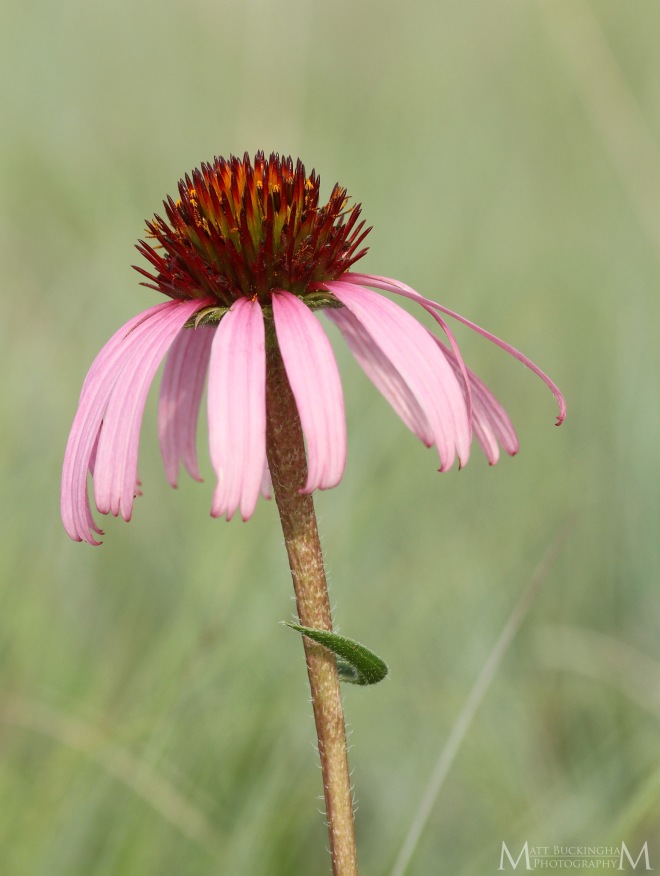
Narrow-leaved Purple Coneflower
What a difference two weeks can make. It was just over two weeks after our first visit in late April when we again made our way to the Cross Timbers and Prairies. What we found was an almost entirely different cast of floral characters. Little more than basal rosettes and fruit-bearing stems remained of the shooting stars. The cactus blooms were all faded, the buds we had seen during the previous trip had already opened and withered. It must have been the week between our visits.
Before I continue, per request, I’m providing a map of the Ecoregions of Texas. I’m sharing the EPA ecoregion map, as it is slightly more nuanced and shows more of the areas I discuss in this two part series about the Cross Timbers and Prairies. The map is too detailed to post here, so click the link below to see just where in the Lonestar State this region can be found.
Coneflowers (genus Echinacea) are some of those iconic plants whose name conjures images of the prairie. They certainly stole the show in the Grand Prairie in mid may. Here the dominant species was the Narrow-leaved Purple Coneflower (Echinacea angustifolia). This characteristic species of the Great Plains reaches the southern extent of its range in central Texas.
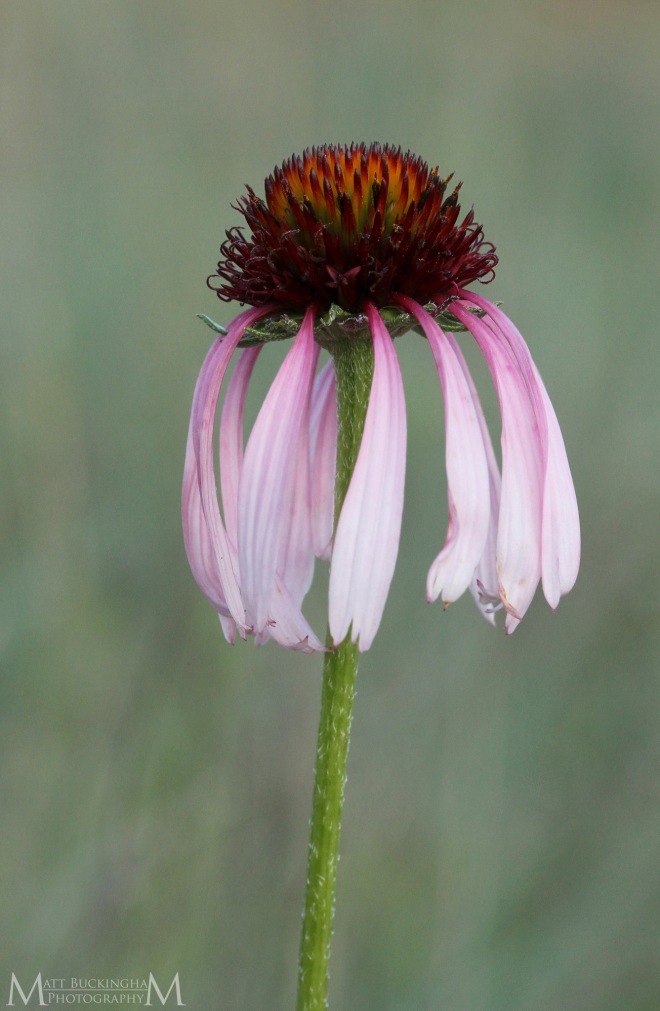
Narrow-leaved Purple Coneflower
Perhaps the most abundant wildflower of this trip was the Green Antelopehorn (Asclepias asperula). This unique milkweed was blooming throughout the prairie, within the maintained right-of-ways of roadways and utilities, and even in many yards in the area. Despite its ubiquity, it is undeniably beautiful and unique, and was a welcomed sight throughout the trip.
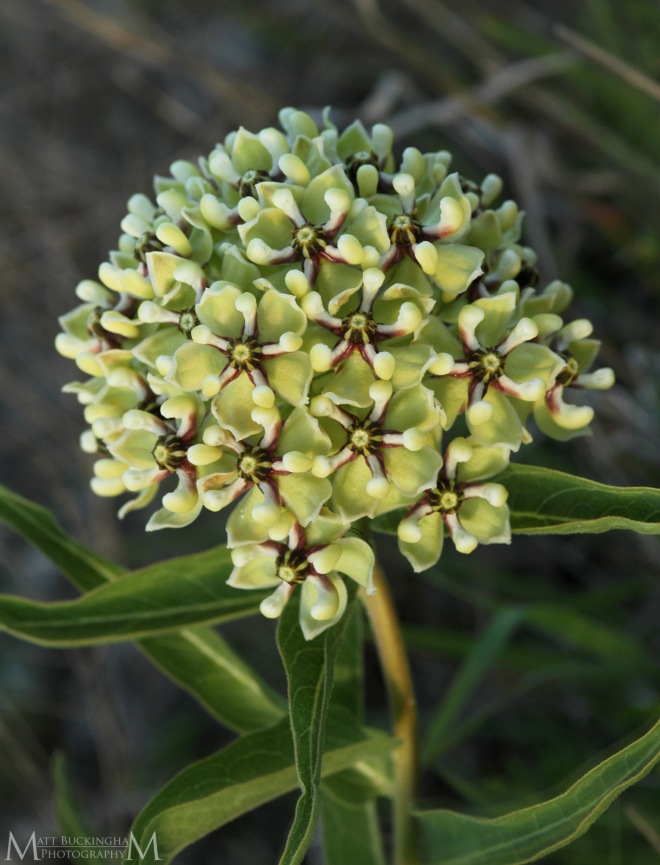
Green Antelopehorns
A. asperula is primarily western in its distribution, occurring in more arid regions of the Great Plains, Southwest, and Intermountain West. It approaches the eastern extent of its range in central Texas. Here it overlaps with the more characteristically central and eastern Green Milkweed (Asclepias viridis) in many areas. The antelopehorns are easily distinguished by their narrow leaves and tight flower clusters.
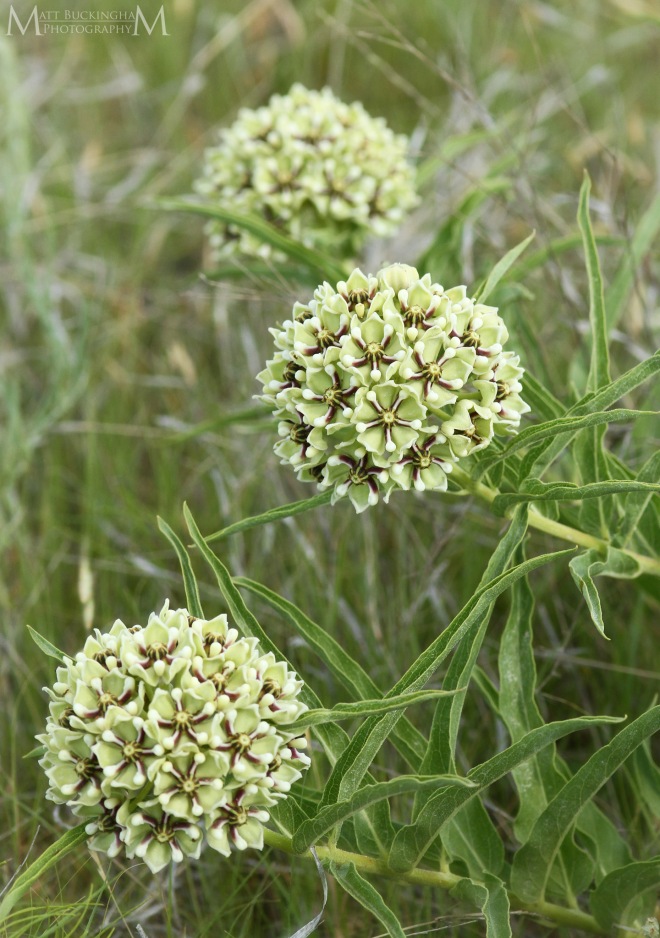
Green Antelopehorns
While driving through the Lyndon B. Johnson National Grasslands I noticed a blooming rosebush. It took some time to key it out, but I was able to identify it as the Climbing Prairie Rose (Rosa setigera) by the glandular pubescence on the flower buds. This is one of a few species of rose that area native to Texas, and it was a treat finding it in a county where it had not been previously vouchered.
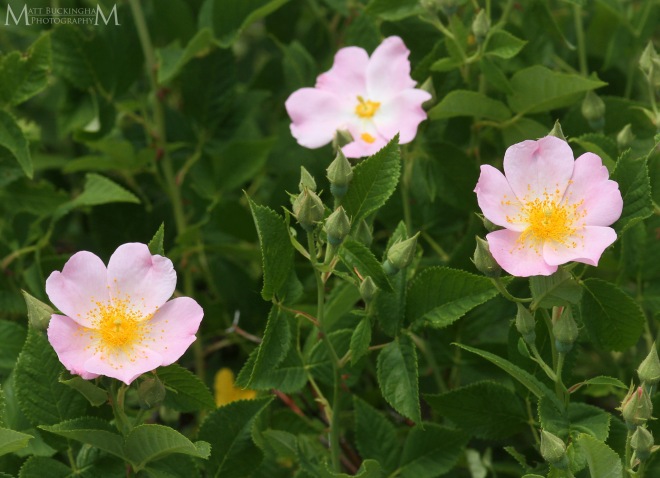
Climbing Prairie Rose
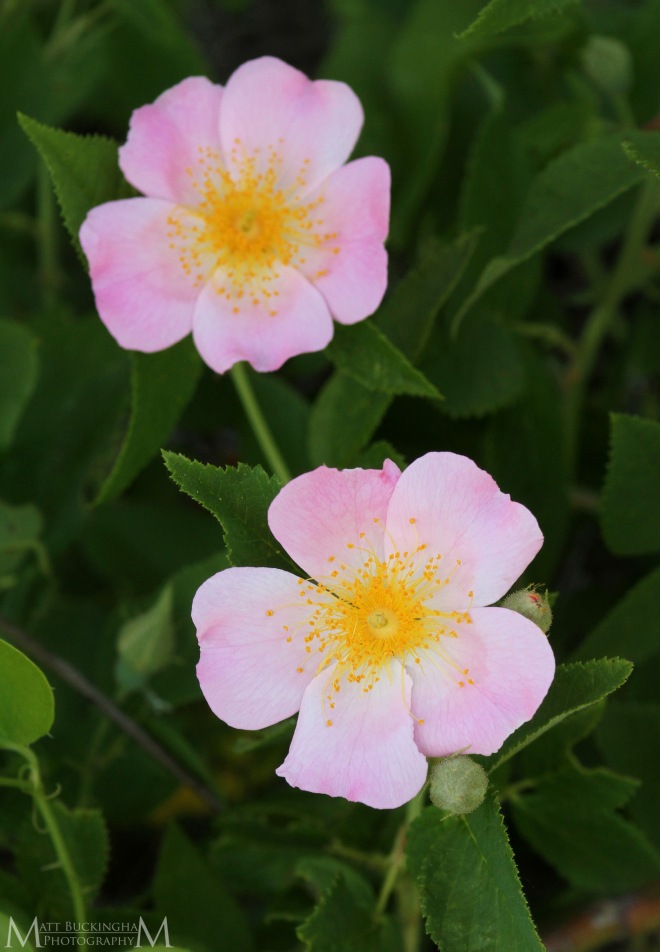
Climbing Prairie Rose
Growing low to the ground was the Snake Herb (Dyschoriste linearis). This pretty little forb was everywhere, often tucked away and obscured by some more prominent plant.
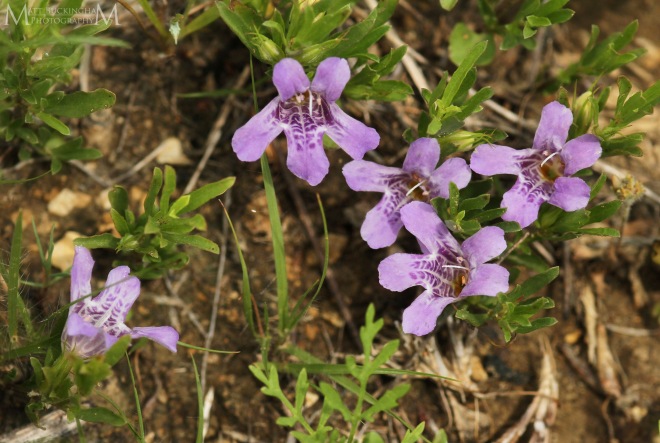
Snake Herb
Also growing close to the ground was the Trailing Krameria (Krameria lanceolata). I always enjoy seeing this species, with its orchid-like blooms and spiny fruit which has caused me to utter an expletive or two while sitting, kneeling, or resting my hand on it.
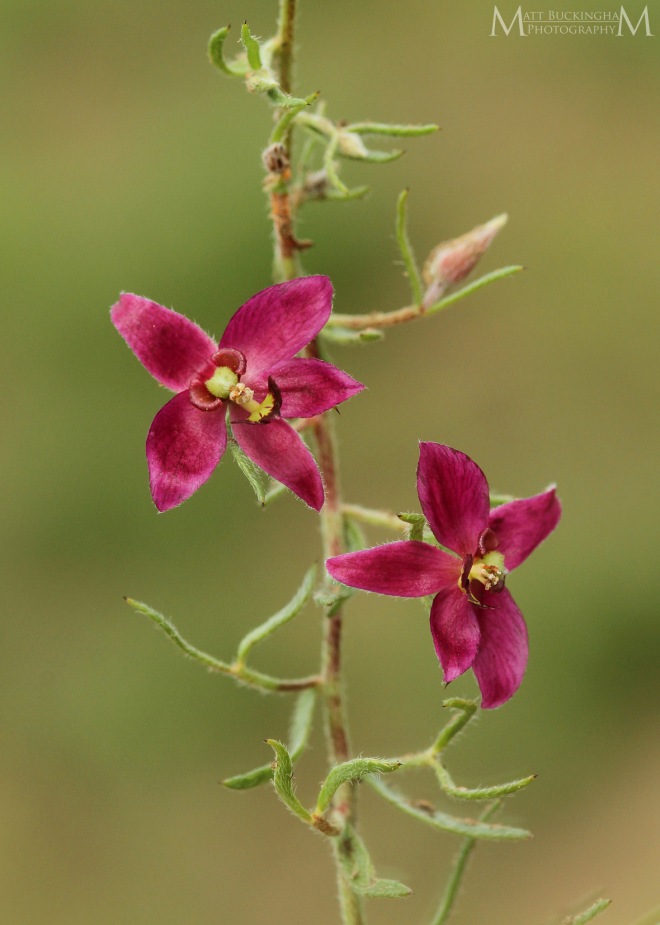
Trailing Krameria
Another species I was excited to see was the Star Milkvine (Matelea biflora), a member of the milkweed family whose distribution is limited to Texas, Oklahoma, and possibly northern Mexico.
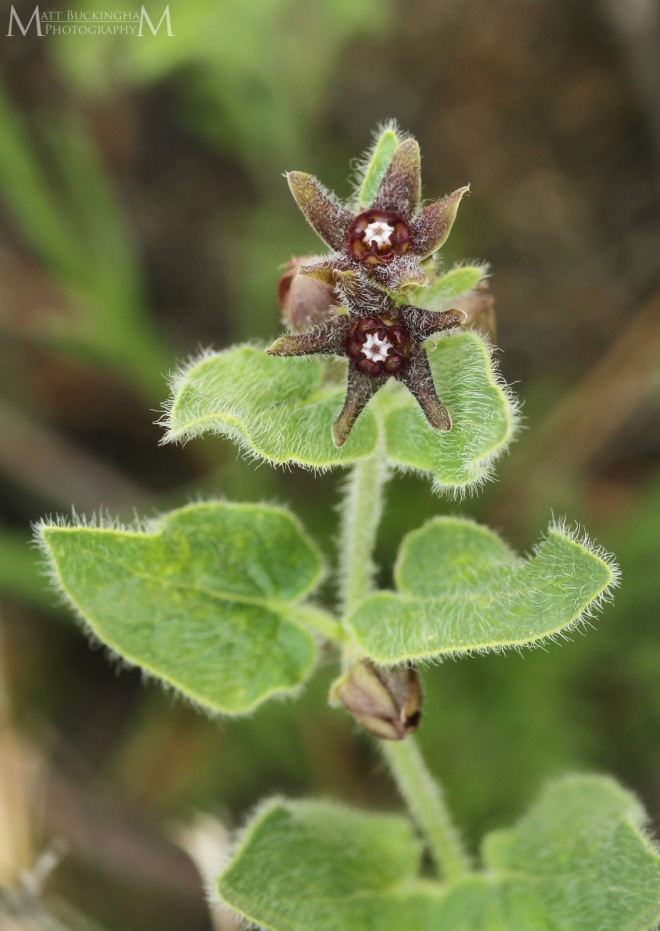
Star Milkvine
Satisfied with our finds in the Grand Prairie, we opted to head into the Eastern Cross Timbers and Prairies, where we found a more typical mosaic of oak woodlands and prairie openings. Here I found a plant that is not often observed in Texas: the Pale Purple Coneflower (Echinacea pallida). Though elsewhere in its range the may show tinges of purple, the ray florets of Texas individuals are typically pure white. Other species of Echinacea in the state, most notably Echinacea sanguinea in East Texas are often misidentified as E. pallida, but true E. pallida is quite rare in Texas. It can be differentiated from other species of its genus in the area by its white pollen.
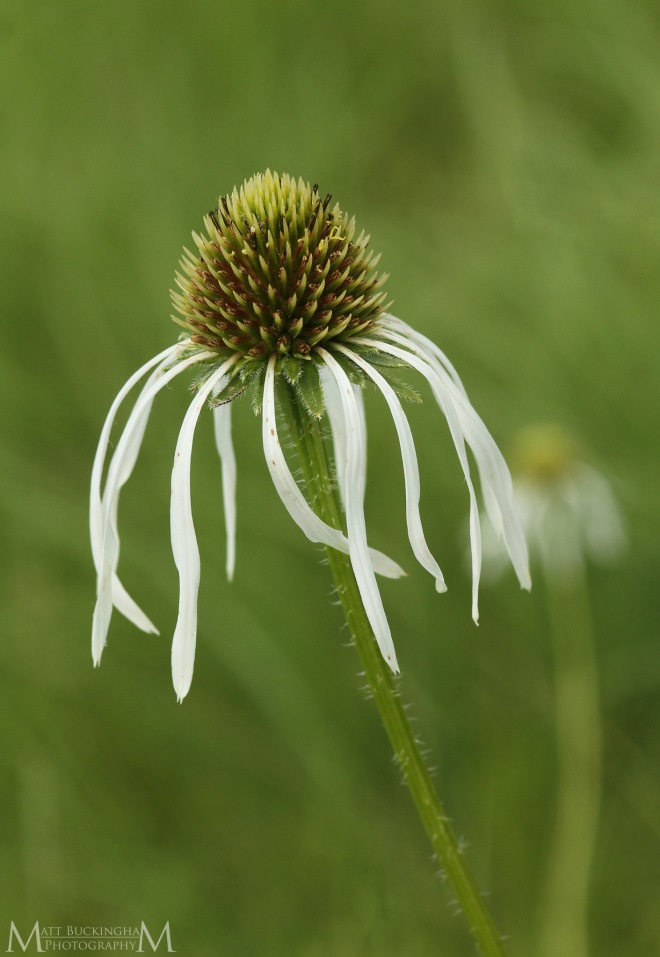
Pale Purple Coneflower
The idyllic meadow where Pale Purple Coneflower bloomed was the perfect way to end the second leg of our Cross Timbers adventure. Though I’m not a native Texan, the more I get to know the Lonestar State, the more captivated I become with its biodiversity and staggering array of landscapes. I have spent most of my adult life exploring it, and I have still barely scratched the surface. I don’t pretend to know the meaning of life, but perhaps we all make our own meaning. And as I drove left the Cross Timbers behind, traversed the Blackland Prairie and Post Oak Savannah, and returned home to the Pineywoods, I was never more confident that the meaning of my time here is to document the beauty and diversity of Texas, and beyond, so that just maybe I might spark in another some semblance of the passion, love, and awe I feel for the natural world.
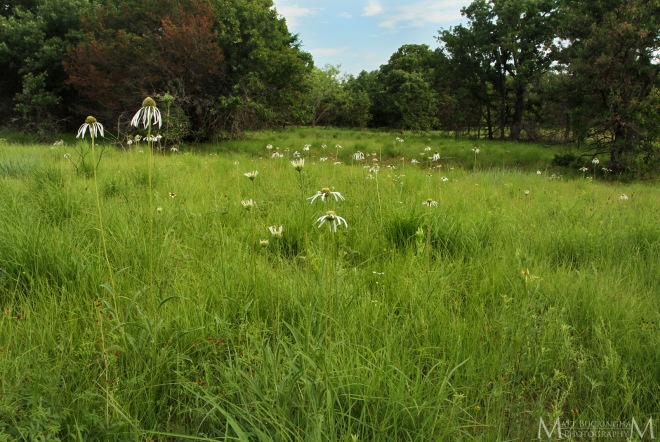
Coneflower Meadow

Wow, Matt! So much to see in your adopted state, and you present it so well! Makes me want to come back for another visit.
Jim Fowler
http://www.jfowlerphotography.com
LikeLike